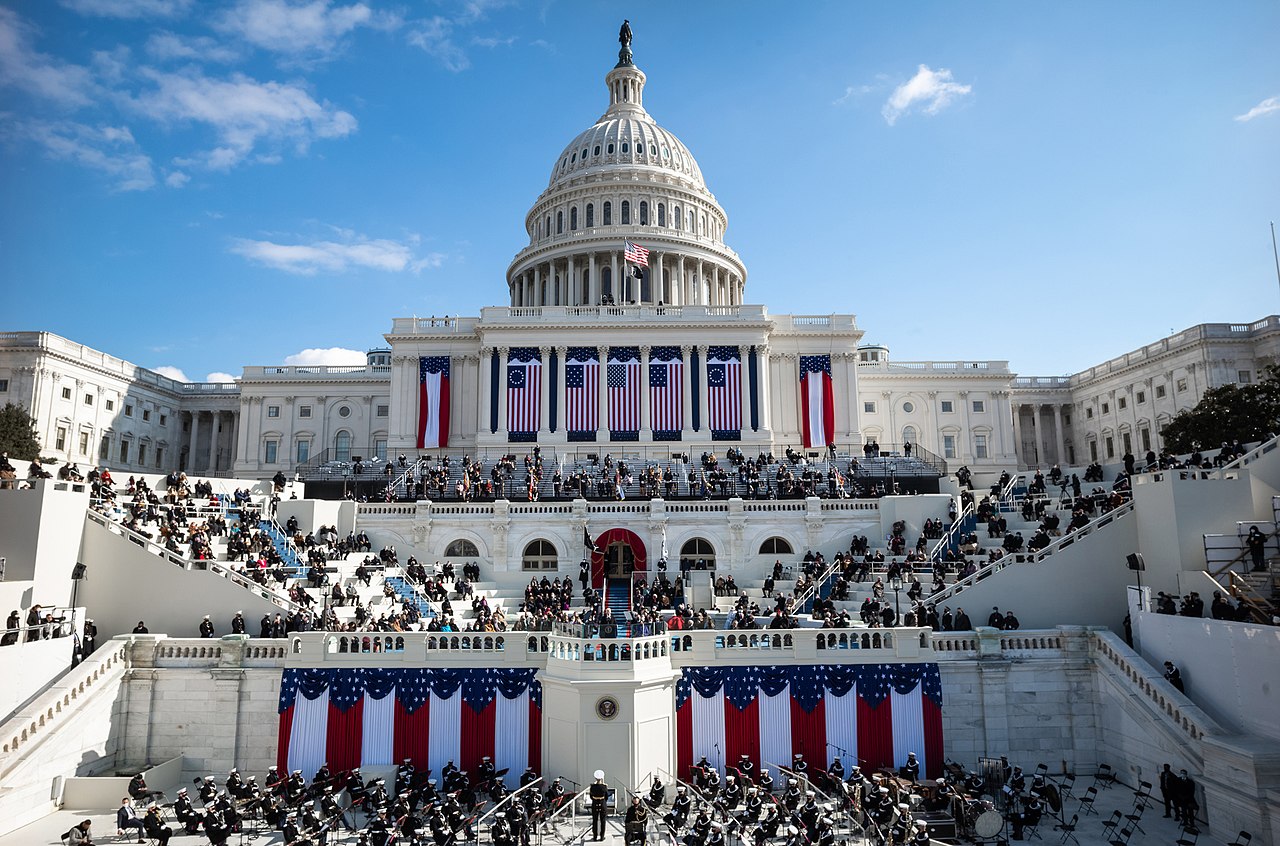Blog
January 16, 2025
From Reagan to Trump: The History of Inaugurations
Every four years, Inauguration Day has served as a symbol of our country’s strong democracy and commitment to a smooth transfer of power. On Jan. 20, President-elect Donald Trump will be sworn in for the second time on the West Front Terrace of the Capitol, a tradition started over 30 years ago by President Ronald Reagan.
Reagan’s first inauguration
Since George Washington’s ceremony, inaugurations have symbolized our democracy with an ever-growing list of traditions surrounding the event. However, it was Reagan, the movie star turned politician, whose infusion of Hollywood theatrics into public events receives credit for the modern-day spectacle.
On the eve of his inauguration, then President-elect Reagan met with Frank Sinatra to launch ABC’s All-Star Inaugural Gala, an event Sinatra also planned for President John F. Kennedy in 1961. In Sinatra’s own words, Reagan’s gala was “the greatest collection of talent America could offer to any audience.”
The inaugural ball was a tradition started in 1809 by James Madison. Although subsequent presidents have expanded the number of balls held on Inauguration Day, none did so more than Reagan, who hosted nine inaugural balls. Reagan joked, “If we get in and out of each one of the parties in 10 minutes, it will only take us 4 1/2 hours.”
Reagan’s festivities cost $16 million and at the time was the most expensive in history.
Planning inaugurations
The Presidential Inaugural Committee and the Joint Congressional Committee on the Inauguration are responsible for organizing Inaugural events. Both receive support from the General Service Administration’s inaugural support team and various law enforcement agencies.
The Presidential Inaugural Committee is a nonprofit organization whose staff is chosen by the incoming administration and is responsible for the planning and execution of most inaugural activities including parades, fireworks and inaugural balls.
The Joint Congressional Committee leads the planning and execution of the Inaugural Day events, including the swearing-in and subsequent luncheon. In 1901, the House and Senate agreed on a joint resolution leading to the creation of the committee which is comprised of three senators and three House members selected by the President of the Senate and the Speaker of the House, respectively.
Funding inaugurations
Inaugurations are funded through a combination of taxpayer money, private donations, and ticket and merchandise sales. Ticket prices and ceremonial benefits vary with each administration. As outlined by the Trump administration, individuals who donate $1 million or raise $2 million can expect benefits to include access to “high profile speakers,” dinners with the president-elect and vice president-elect, and tickets to the inaugural balls.
The following are the Presidential Inaugural Committee donation totals from previous inaugurations:
- Ronald Reagan’s 1981 committee: $19 million.
- George H.W. Bush’s 1989 committee: $30 million.
- Bill Clinton’s 1997 committee: $33 million.
- George W. Bush’s 2001 committee: $40 million.
- Barack Obama’s 2009 committee: $53 million.
- Donald J. Trump’s 2017 committee: $100 million.
- Joe Biden’s 2021 committee: $61.8 million.
- Donald Trump’s 2025 committee: $200 million.
The Presidential Inaugural Committee must report any donation of $200 or more to the Federal Election Commission within 90 days after the inauguration. Individual administrations have imposed different restrictions on who they can accept donations from. The Biden team, for instance, banned contributions from the fossil fuel industry and registered lobbyists in 2021.
Taxpayer funds also play a role. The Joint Congressional Committee for the 2025 inauguration received $3.675 million through the Further Consolidated Appropriations Act of 2024. Congress also appropriated funding to reimburse state and local governments that contribute security, planning and sanitation support.
The last inauguration ceremony for Biden was notable given many of the in-person celebrations were replaced with virtual events due to the COVID-19 pandemic. In contrast, Trump’s second inauguration is set to be the most expensive in history and will witness a return to the large gatherings and traditional events.
This piece was originally written by Carter Hirschhorn and updated by Ryan Martinage, an intern with the Center for Presidential Transition.
